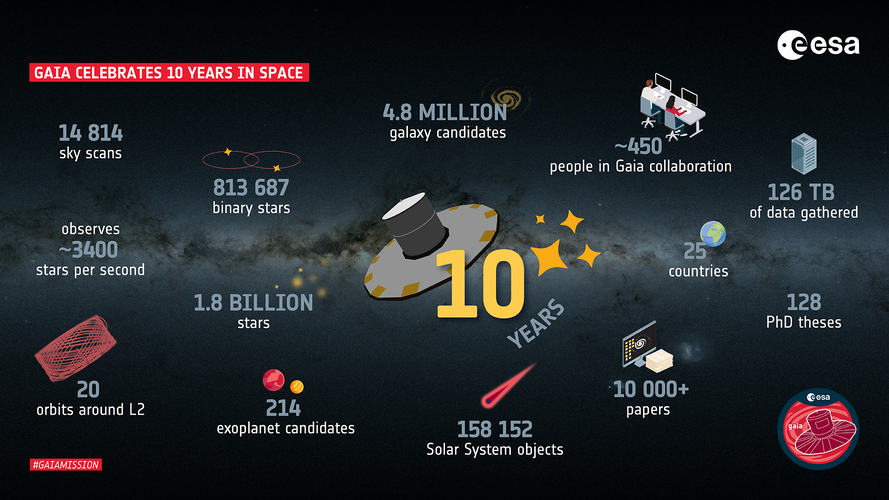
Image:
Ten years ago, on 19 December 2013, ESA’s billion star-mapping satellite Gaia launched. Since then, Gaia has been scanning the sky and gathering an enormous amount of data on the positions and motions of 1.8 billion stars, enabling numerous discoveries about the history of our galaxy.
Gaia’s catalogue is ever-growing containing data on stars and other cosmic objects such as asteroids in our Solar System, exoplanets, binary stars, and other galaxies. The Gaia collaboration, consisting of about 450 people in 25 countries, prepares the data for scientific use. This has resulted in publications of over 10 000 scientific papers
Ten years ago, on 19 December 2013, ESA’s billion star-mapping satellite Gaia launched. Since then, Gaia has been scanning the sky and gathering an enormous amount of data on the positions and motions of 1.8 billion stars, enabling numerous discoveries about the history of our galaxy.
Gaia’s catalogue is ever-growing containing data on stars and other cosmic objects such as asteroids in our Solar System, exoplanets, binary stars, and other galaxies. The Gaia collaboration, consisting of about 450 people in 25 countries, prepares the data for scientific use. This has resulted in publications of over 10 000 scientific papers and 128 PhD theses.
Find out more about Gaia’s first ten years of science here.
Read more from original source...



 Image:
Image: